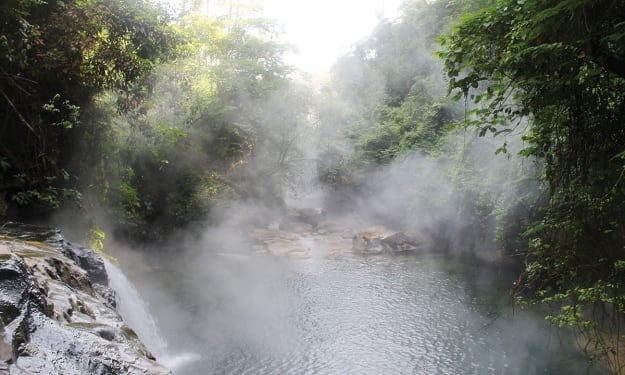Unconventional Ecosystems
Showcasing Life's Resilience and Adaptability

When we think of ecosystems, our minds often conjure images of lush forests, coral reefs, or expansive grasslands. However, ecosystems can emerge in the most unexpected and peculiar places, where life thrives against all odds. These five remarkable examples of unconventional ecosystems serve as testaments to the incredible innovation and adaptability of life on our planet.
1. Enigmatic Canopies: Redwoods in the Sky
The majestic coast redwoods along the U.S. West Coast are not only awe-inspiring for their towering height, but also for the hidden ecosystems within their canopies. Until the late 1990s, these upper realms remained largely unexplored due to their dizzying heights. Surprisingly, redwood canopies have developed into distinct ecosystems, forming a forest atop a forest. These canopy ecosystems boast an array of species, from redwoods to Sitka spruce and Douglas fir, each flourishing in their unique aerial world. The intricate network of fern mats, soil, and organic matter supports a diverse range of critters, including snails, earthworms, and even moisture-loving salamanders.
2. Ocean Odyssey: The Marvel of Whale Falls
Deep within the ocean's depths lies a captivating and rare ecosystem: whale falls. When these massive marine mammals perish, their carcasses sink to the seafloor, creating unexpected havens for marine life. The scarcity of these whale falls in nature highlights their mystery and importance. Scientists have discovered that these carcasses, rich in nutrients, attract an astonishing array of creatures, such as deep-sea octopuses, bone-eating worms, crabs, and snails. The exploration of these ecosystems sheds light on the enigmatic world beneath the waves.
3. Unforgiving Depths: Life Thrives in Hydrothermal Vents
One of Earth's most extreme ecosystems exists in hydrothermal vents found within the ocean crust. These vents, spewing superheated water infused with minerals, create an environment seemingly hostile to life. However, these vents support a unique ecosystem sustained by chemosynthesis—a process where organisms derive energy from chemical reactions. This remarkable survival strategy fuels the growth of creatures such as giant tubeworms, mussels, and crabs. Beyond their extraordinary inhabitants, hydrothermal vents play an unexpected role in climate regulation and offer glimpses into Earth's earliest microbial life.
4. Icy Oases: Ecosystems Around Icebergs
Icebergs, often considered desolate and harsh environments, play an unexpected role in nurturing life. As these ice giants drift through icy waters, they release freshwater and minerals, stimulating the growth of phytoplankton. These microscopic organisms not only form the foundation of a vibrant ecosystem but also contribute to carbon absorption in the ocean. The expansive influence of icebergs on surrounding regions demonstrates their significance in understanding climate change's effects on marine environments.
5. Chernobyl's Unlikely Refuge: A Radioactive Ecosystem
In the aftermath of the Chernobyl nuclear disaster in 1986, an exclusion zone was established around the affected area, rendering it inhospitable to human habitation. Surprisingly, this irradiated zone has become a haven for certain species. While the long-term impacts of radiation on wildlife are evident, certain animals have demonstrated unexpected resilience and adaptation. Scavengers like wolves and Eurasian otters thrive in this human-free environment, revealing how nature can reclaim even the most catastrophic sites.
These unique ecosystems underscore the ingenuity and tenacity of life to endure and thrive in the face of adversity. Through studying these unconventional habitats, we gain insights into the intricate relationships between organisms and their surroundings. These insights inform conservation efforts, climate change predictions, and our understanding of the Earth's history. The diversity and adaptability of life continue to inspire, showing that even in the most unlikely places, ecosystems flourish and exemplify the remarkable resilience of our planet's living tapestry.
About the Creator
Enjoyed the story? Support the Creator.
Subscribe for free to receive all their stories in your feed. You could also pledge your support or give them a one-off tip, letting them know you appreciate their work.





Comments
There are no comments for this story
Be the first to respond and start the conversation.